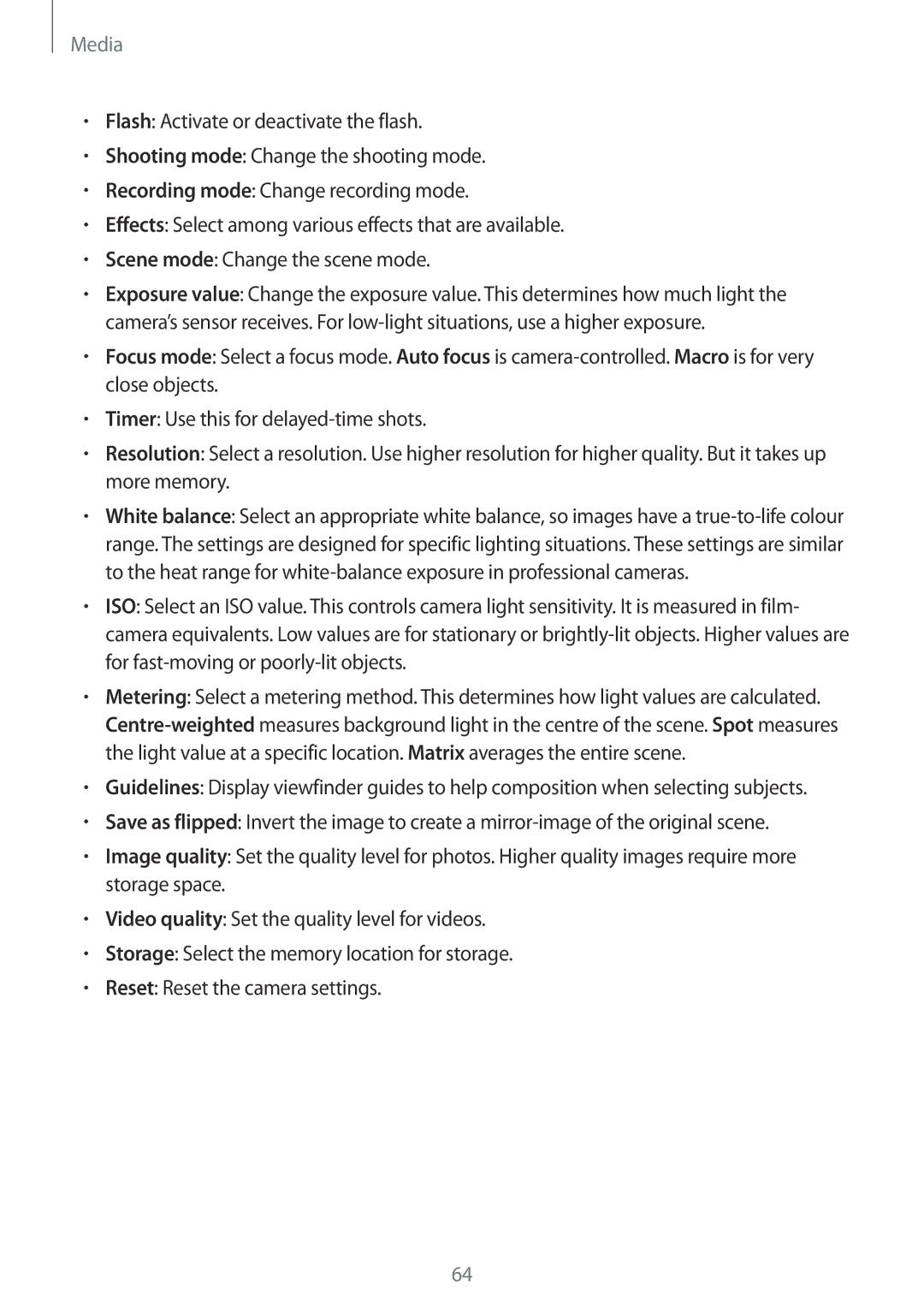Media
•Flash: Activate or deactivate the flash.
•Shooting mode: Change the shooting mode.
•Recording mode: Change recording mode.
•Effects: Select among various effects that are available.
•Scene mode: Change the scene mode.
•Exposure value: Change the exposure value. This determines how much light the camera’s sensor receives. For
•Focus mode: Select a focus mode. Auto focus is
•Timer: Use this for
•Resolution: Select a resolution. Use higher resolution for higher quality. But it takes up more memory.
•White balance: Select an appropriate white balance, so images have a
•ISO: Select an ISO value. This controls camera light sensitivity. It is measured in film- camera equivalents. Low values are for stationary or
•Metering: Select a metering method. This determines how light values are calculated.
•Guidelines: Display viewfinder guides to help composition when selecting subjects.
•Save as flipped: Invert the image to create a
•Image quality: Set the quality level for photos. Higher quality images require more storage space.
•Video quality: Set the quality level for videos.
•Storage: Select the memory location for storage.
•Reset: Reset the camera settings.
64
